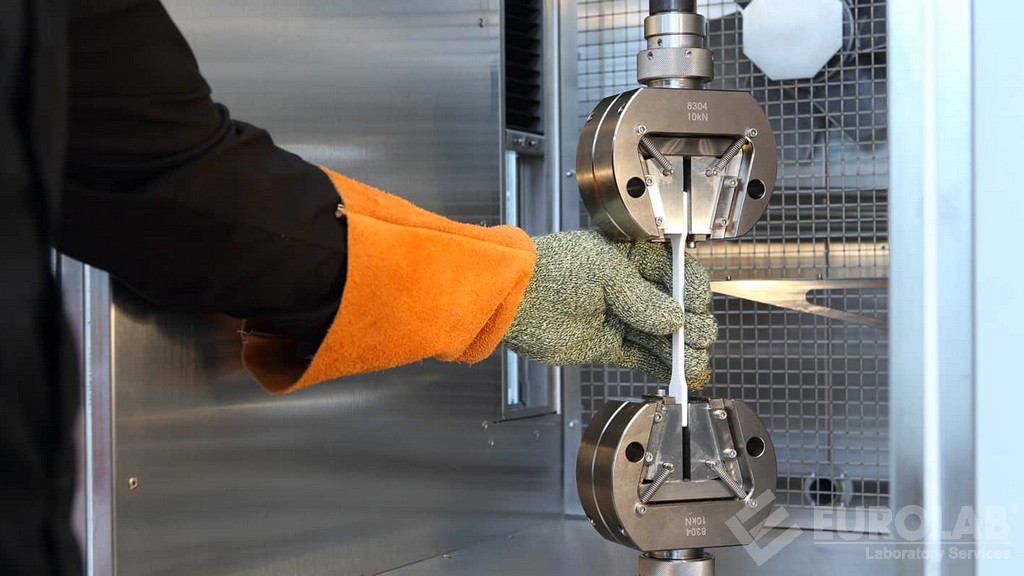UOP 603 Wax Content in Production Chemicals Test
The UOP 603 method is a widely recognized technique used to determine wax content in production chemicals and additives, which are crucial components in the oil and gas industry. Wax content affects the performance of these chemicals significantly, influencing their ability to prevent equipment fouling and ensure efficient flow in pipelines. This test is essential for quality control, compliance with regulations, and the development of new formulations.
The UOP 603 method involves the use of a Soxhlet extraction apparatus, which allows for the precise quantification of wax components by dissolving them in a solvent under controlled conditions. The primary target compounds include n-paraffins, iso- and cycloparaffins, and aromatics, all of which contribute to the overall wax content.
The test is particularly important for production chemicals that are used in high-pressure environments or in contact with complex hydrocarbon mixtures. Understanding wax content helps in optimizing formulations to withstand these challenging conditions. The method is also valuable for research and development (R&D) activities, where new additives need to be tested against existing standards.
The UOP 603 test provides quantitative results that are critical for quality assurance and compliance with industry standards. It allows for the identification of wax content in various production chemicals, including waxes, lubricants, and hydraulic fluids. The method is not only useful for ensuring product performance but also for environmental considerations, as it helps minimize the use of unnecessary additives.
The test procedure involves several steps, starting with the preparation of the sample. This includes thorough degreasing to remove any external contaminants that could interfere with the extraction process. The sample is then placed in the Soxhlet apparatus along with a solvent, typically n-heptane or benzene, which extracts the wax components.
The extracted waxes are collected and further purified before analysis by gas chromatography (GC). This step ensures accurate quantification of the wax content, as impurities from the extraction process can skew results. The GC analysis is performed under specific conditions that ensure optimal separation and detection of the target compounds.
The results obtained from the UOP 603 test are highly reliable due to the precision of the Soxhlet extraction method and the sensitivity of the GC analysis. These results are critical for quality managers, compliance officers, R&D engineers, and procurement specialists who rely on them to make informed decisions about product formulation and performance.
The UOP 603 test is part of a broader suite of tests used in oil and gas production chemicals testing. It complements other methods such as those used for determining viscosity, thermal stability, and oxidation resistance. Together, these tests provide a comprehensive picture of the properties and potential of production chemicals.
Applied Standards
The UOP 603 wax content test is based on ASTM D1894, which provides detailed procedures for determining wax content in petroleum products. This standard ensures that all tests are conducted under consistent conditions, leading to accurate and comparable results.
The application of ASTM D1894 in the UOP 603 method includes specific instructions for sample preparation, extraction solvent selection, and GC analysis parameters. These standards are essential for ensuring that the test results are reliable and meet regulatory requirements.
Compliance with these standards is crucial for maintaining consistency across different laboratories and ensuring that the tests are conducted in a standardized manner. This standardization is particularly important in an industry where precision and repeatability are critical for product performance and safety.
Scope and Methodology
| Step | Description |
|---|---|
| Sample Preparation | The sample is degreased to remove any external contaminants. This step ensures that the extraction process is not affected by impurities. |
| Solvent Selection | A solvent such as n-heptane or benzene is used in the Soxhlet extraction apparatus. The choice of solvent depends on the specific wax components to be extracted. |
| Extraction Process | The sample and solvent are placed in the Soxhlet apparatus, which extracts the wax components through repeated cycles of heating and cooling. |
| Purification | The extracted waxes are purified to remove any impurities from the extraction process. This step ensures accurate quantification of the wax content. |
| GC Analysis | The purified waxes are analyzed by gas chromatography under specific conditions that ensure optimal separation and detection of target compounds. |
| Result Interpretation | The results from the GC analysis are interpreted to determine the wax content in the sample. These results provide quantitative data that is crucial for quality control and compliance with industry standards. |
The UOP 603 method, as described above, provides a comprehensive approach to determining wax content in production chemicals. This test is essential for ensuring product performance and reliability, especially in high-pressure environments or complex hydrocarbon mixtures.
Quality and Reliability Assurance
The quality and reliability of the UOP 603 wax content test are ensured through strict adherence to ASTM D1894 standards. This includes precise sample preparation, accurate solvent selection, and careful GC analysis parameters.
Laboratory personnel undergo regular training to ensure that they understand and follow these procedures correctly. Quality assurance is further enhanced by using high-quality instruments and reagents, which contribute to the accuracy and precision of the results.
The use of advanced chromatography equipment and experienced technicians ensures that the test results are reliable and repeatable. This consistency is crucial for maintaining product quality and ensuring compliance with industry standards.
Quality managers, compliance officers, R&D engineers, and procurement specialists rely on these accurate and consistent results to make informed decisions about product formulation and performance. The UOP 603 method provides a robust framework for achieving these objectives.





